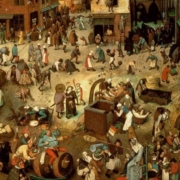Introduction
When Stefania Marinelli contacted us approximately two years ago, also on Robert Hinshelwood’s suggestion, with a proposal to edit a monographic issue of Funzione Gamma on the subject of the therapeutic community, we felt both pleased and a bit worried. We were convinced that it would offer an important opportunity to explore a subject so dear to us, but that was also an extremely complex one. The years of efforts put forth by the on-line journal www.therapiadicomunita.org, and the practice shared by numerous friends and colleagues to whom we are bound by strong ties of affection and esteem, and who accepted our invitation to collaborate, reassured us we could offer readers an overview of the status of the therapeutic Read more

